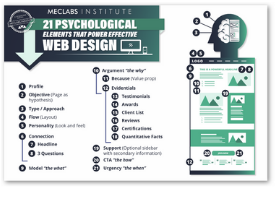I find myself ranting about how *dumb* most PR people are about online PR frequently. So I thought today it might make a nice change to show an example of an emailed pitch from a *smart* PR gal. I get more than 100 emailed press releases and pitches a day. This is one of the few I didn’t delete. Instead I clicked on “reply” to set up the interview. The tactics she used are repeatable across industries:
SUBJECT LINE: Gale Group introduction [ok kinda bland, but not as bad as ‘News from”]
MESSAGE COPY: Hi
Gale Group is a leading Internet content supplier. We’re the world’s largest publisher of reference information for libraries and have a fast-growing content licensing business. I recently discovered MarketingSherpa and like it very much. I’ve seen Gale mentioned in interviews and articles (sometimes as Gale Research — a name we used until 1998).
I intend to add you to our media list, but would also like to offer our content experts as sources of interviews. For example, we’re seeing a subtle shift in the content marketplace from pure content to content management tools (like indexes, thesauri, vocabulary tools). That shift, however small, signals a change in the content industry — only a handful of companies currently build effective content management tools.
Gale’s VP of Business Development — Chris Morton — is a thoughtful interview on this topic (pretty much anything on content is in his bailiwick). He understands the strengths of the main players and where the content industry is going. In an interview, his answers are meaty — lots of depth and insight.
The MarketingSherpa interviews I’ve read have been quite interesting, so forgive me for providing a list of questions that you may already be contemplating, but I could envision questions like…
* Are you seeing a change in what content buyers are purchasing this year versus past years?
* Why are information buyers looking for content management tools?
*What tools are they looking for?
*What does that say about the sophistication of today’s buyers?
*What does that say about where the content industry is going?
*What different skill sets do buyers and sellers need now versus a year ago?
*Who benefits from this change?
*Will there be an industry shake-out?
I’m looking forward to hearing from you. I’d like to get to know you and also provide you with more background on Gale. My contact information is below. Thanks.
Beth Dempsey
Manager, Corporate Communications
Gale Group
Now that I’ve been “outed” in the epublishing press as a massive supporter of the use of compelling subject lines for marketing newsletters, thought I’d share a fabulous one I just saw with you. It’s for today’s issue of Astrology.com’s monthly specials newsletter:
“Astrology.com:Your favorite subject — you!”
What horoscope-loving person is gonna click “delete” on that one before reading it?? No one! It’s a thing of marketing-beauty!
Of all the major online ad networks, ValueClick has the MOST ANNOYING site design. Go take a look if you want a textbook case in how NOT to design a site.
It starts with a value-less Flash intro (floating logos are not a benefit-laden marketing message) and goes downhill from there. The nearly 100% Flash site (a little Flash is all very well and fine, but having all the text wiggeling about just detracts from your actual message) is not designed to fit into the average business surfers’ 800×600 view. (Web designers so often forget that not all of us set up our monitors the way they like to.) Then when you look for contact information, it’s almost impossible to figure out how to get email addresses. The headline says, “call us or email us” and then the page lists nothing but phone numbers. I finally figured it out (there’s a little flash button in the upper left corner that changes the page to email addresses.)
Somebody needs to go to remedial site usability school. OK, rant over. Thanks for putting up with my temper!
OK already! If I get one more promotional email or ezine with prefacing remarks about our national tragedy, I’m going to scream. Yes we all feel very deeply about events. But when you stop and think about how many emails the average person gets … all of which contain about the same preface these days … you’ll see that bringing the subject up yet again when it’s out of context is overkill. It’s ok to go ahead and market something without a preface.
You don’t need to apologize for sending a marketing message at this time anymore.
Does this mean your message should be business as usual? Well, maybe not. Famed Manhattan-based author Fran Lebowitz noted on the radio that the consumer magazines she’s got in the mail last week, written and printed before the WTC events, seemed like “relics from another era. Very outdated.” Which means your normal happy-face-buy-now marketing messages of the past may not be quite right now.
However, if you just change them by sticking that way-overdone preface in front, it won’t help sales. This is where the true art of copywriting kicks in. Good luck.
Yeah! PBI Business Media, who I thrashed in this Blog a few weeks ago when they sent out an email newsletter with a terribly boring, why-bother-to-open-this, subject line, just sent out their next issue. This time they had a great subject line.
As I recall, the last one just said PBI Media August 2001 issue This one reads Sept 2001 issue 93% of surveyed carriers reveal that prices will fall further! which, if you’re in their target audience (telecom industry execs) is much more of a must-open-and-read-right-away email subject.
Can they continue to improve this? Yes, I’d suggest taking the year “2001” off, because it’s wasting 4 character spaces at the very start of the subject. Many people’s email boxes don’t show them your entire subject line … sometimes just the first 20 characters or so. So you really want to cram in the sexiest stuff in those first characters and not risk it not being seen.
If you write a promotional newsletter for your company and you’ve written some killer subject lines, please send them in so I can post them here to inspire people! Email to AHolland@MarketingSherpa.com
Yuck, yuck, yuck. I just got my second email of the day from someone in the online marketing industry trying to sell me something with a faux-Patriotic message. You know — we have to stand strong against the enemy, keep our economy going, so buy my thing! In this case the email was from Andy Batkin, founder of Digitrends.
Andy was the first person to publish a newsletter on the topic of interactive marketing waaay back in 1994. The fact that he’s now using a slimy email marketing pitch to sell tickets to an Internet marketing-related event is inexcusable. He knows better! (Also, he left the subject line of the email blank — by mistake? on purpose? — which is a classic spam-marketing move.) Tisk, tisk.
Are online writing styles affecting your offline marketing content yet? This afternoon I found myself having a hard time reading a printed white paper on banner advertising. Which was weird because I’m an omniverous reader, it’s a topic I care about, and the paper was very well written.
Then a lightbulb went off in my head: the printed text was driving me crazy because it wasn’t laid out like writing in Best Practices online writing. There were few bullet points — instead I had to read through paragraphs to tease information out for myself. There were no quick teasers before detailed explanations, so I had to read the whole explanation to learn what it was about. Lists weren’t numbered. And there was nowhere I could “click” to learn more on points that interested me.
Which makes me wonder – is there a generation growing up now who prefer online-style writing, even for the printed page? And how should this affect white papers, brochures, direct mail, press releases, annual reports, etc? For more info on best practices in online writing, check out WebWord.
Miss Pixies a used furniture shop in one of the hippest neighbourhoods in Washington DC, replaced its regular window display with a giant American flag. Last May we did a Case Study on how Pixies’ weekly display changes were more successful both online and offline than a daily updates would be. Now we’ve noticed Pixies display’s influence spreading as flags are sprouting up like crazy in this otherwise too-cool-to-be-overtly-Patriotic neighborhood.
Right up there in the “What were they thinking?!” Hall of Fame — United Airlines’ skyscraper banners now appearing on E! Online boast, “Explore the possibilities – Get great fares, great flights and more”
At least clicks are automatically redirected to United’s home page message of prayers, etc. from the CEO.
It shows that while most investor relations and corporate communications execs have been educated on (and laid plans for) crisis communications, your Web marketing team may be far behind.
Reports are coming in that sales are diving in the advertising and marketing world. Which makes sense. How can you expect lots of catalog orders when people are glued to their TV sets? How can you advertise in the media when your ad will appear grotesque in the context of the somber news?
Back in 1990 during the Gulf War, I was in charge of North American direct marketing for famed defense publisher Jane’s. The press kept on calling us to find out if our sales were up because of the war. Nope. Not at all. Sales sucked. We got unbelievable PR from the War — they even interviewed one of our editors during the SuperBowl half-time break! But I couldn’t make budget. Nobody was buying anything, they were too busy focusing on the crisis.
Yes, stopping terrorism is MUCH more important than anyone’s sales goals. Period.
Being a businessperson though, I hope that more companies and jobs are not lost during the battle. It’s already been such a hard year for so many of my friends, colleagues and competitors. For some of them this will be an unsustainable blow.








